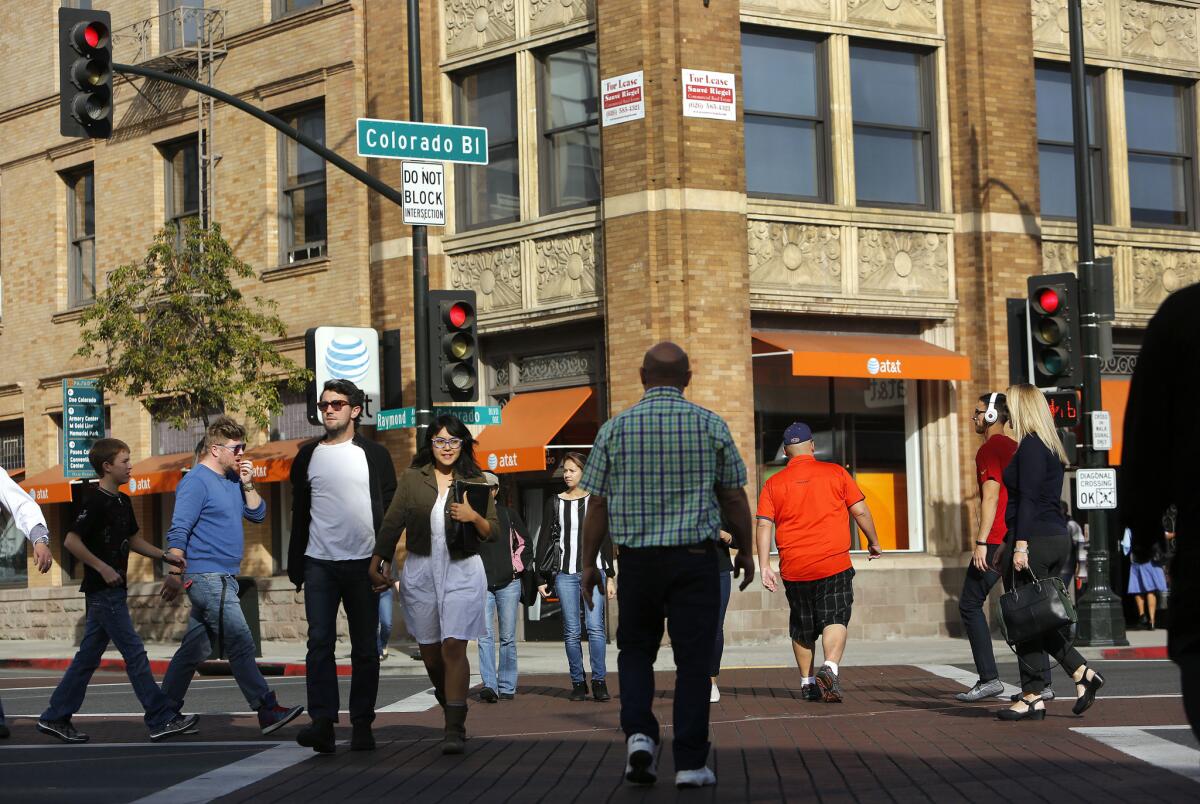Los Angeles on cusp of becoming ‘major’ walkable city, study says

- Share via
Despite its long love affair with the car, Los Angeles is on the cusp of becoming a “major” walkable urban area. And doing so could do wonders for its real estate market, at least in spots.
That’s the gist of a new report released Tuesday by SmartGrowth America and George Washington University, which measured the number of walkable urban neighborhoods in 30 big metro areas and looked at the potential to develop more.
Washington, D.C., New York and Boston, respectively, topped the rankings. The L.A. area tied for 16th with the Columbus, Ohio, and Kansas City metro areas. Orlando, Fla., ranked last.
Although the L.A. area was in the middle of the pack, the prospects for development around new Metro stations and continued revival of suburban downtowns, including Long Beach and Pasadena, will give more Angelenos the chance for a less auto-centric life in the years to come, the report says.
“The future — of a walkable, transit-friendly Los Angeles — is being built right now,” the report says. “It will allow people to drive everywhere they want, assuming they can put up with the traffic, and provide the option of walkable urbanism for those who want it.”
These walkable neighborhoods in Los Angeles and its surrounding cities are already commanding higher rents for office and retail space than their more car-oriented competition, said Chris Leinberger, a former developer and real estate professor at George Washington who led the study, and those rents are going up faster. That’s drawing more developers, and more projects, to this relative handful of places.
“This is a pretty significant change in how we invest, how we build the country,” Leinberger said. “There will be demand for tens of millions of square feet of additional walkable urban development.”
There are challenges, though. Many cities lack the zoning codes and regulatory structures to enable dense, mixed-use projects, which makes approvals far more complicated and expensive than a typical suburban strip mall, Leinberger and developers said. Tweaking those guidelines would help create a more pedestrian-oriented city.
And then there’s the challenge of who can afford to live in these increasingly high-end, concentrated neighborhoods. As prices there climb, many lower and middle-income residents could find themselves pushed out to car-dependent suburbs.
“‘Drive until you qualify’ does not work in a walkable urban development,” Leinberger said.
There are a variety of tools, including density bonuses and tax credits, that cities can use to encourage affordable and middle-income housing in walkable neighborhoods, said Rod Lawrence, a partner with JBG Cos., a developer in Washington, D.C. But it helps to make affordability a priority from the start of the planning process, before developers buy land and sink cash into market-rate projects.
“The city has to be serious about it and come up with a plan,” Lawrence said. “You’ve got to build it in upfront.”
Keep an eye on housing and real estate in Southern California. Follow me at @bytimlogan
More to Read
Sign up for Essential California
The most important California stories and recommendations in your inbox every morning.
You may occasionally receive promotional content from the Los Angeles Times.







